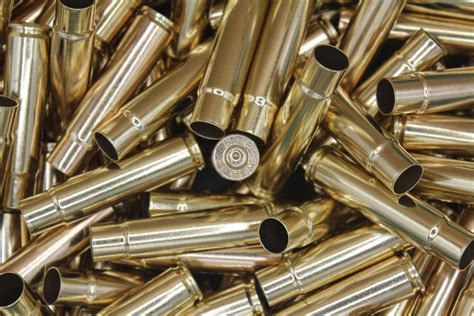How To Make 35 Remington Brass
Ronan Farrow
Apr 01, 2025 · 3 min read

Table of Contents
How to Make 35 Remington Brass: A Comprehensive Guide for Reloaders
Making your own 35 Remington brass might seem daunting, but with the right knowledge and tools, it's a rewarding process that can save you money and ensure a consistent supply of quality brass for your reloading needs. This guide will walk you through the steps, providing insights into the necessary equipment and techniques. Remember safety is paramount throughout this entire process. Always wear appropriate safety glasses and hearing protection.
Understanding the Process: From Spent Cases to Finished Brass
The process of making 35 Remington brass primarily involves preparing spent cases from other calibers and then sizing and trimming them to the correct dimensions for 35 Remington. This requires careful attention to detail and precision.
1. Sourcing Spent Cases: The Foundation of Your Project
The first step is finding suitable spent cases. While you can't create brass from scratch, you can repurpose spent cases from other cartridges. Finding cases that are close in size to .35 Remington will simplify the process significantly. Some common parent cases might be suitable, however, always double-check dimensions before beginning the process to avoid damage to your equipment.
2. Cleaning and Inspection: Preparing for Transformation
Before you begin any processing, thoroughly clean the spent cases. This removes any dirt, powder residue, or primer pockets that could interfere with subsequent steps. Inspect each case carefully for cracks, dents, or any other damage. Discard any cases showing significant damage.
3. Sizing and Neck Turning: Achieving Precision
This is where the precision work begins. You'll need a case sizing die specifically designed for 35 Remington or one that’s suitable for a parent case. Sizing reduces the case diameter to the correct dimensions. For optimal performance, neck turning is recommended. This ensures uniform neck thickness and improves bullet seating consistency. This process typically requires a neck turning tool and lathe.
4. Trimming and Chamfering: Ensuring Proper Length and Fit
After sizing, the cases likely need trimming to achieve the correct overall length. This requires a case trimmer and appropriate trimming dies. Finally, chamfer the case mouth and primer pocket to allow smooth bullet seating and primer insertion.
5. Deburring and Cleaning: The Finishing Touches
After trimming and chamfering, you'll want to carefully deburr any sharp edges. This is crucial for preventing damage to your equipment and for optimal performance. A final cleaning is recommended to remove any metal shavings or debris produced during the process.
Essential Tools and Equipment
Making 35 Remington brass requires specific tools. Here's a list of the essentials:
- Case Cleaning Equipment: This includes tumblers, vibratory cleaners, or ultrasonic cleaners.
- Case Sizing Die: For the specific case you’re using as a parent case, or one made for .35 Remington.
- Case Trimmer: With the appropriate trimming die.
- Neck Turning Tool: Highly recommended for accuracy.
- Chamfering Tool: For both the case mouth and primer pocket.
- Deburring Tool: To smooth any sharp edges.
- Case Lubricant: To make the sizing process easier and prevent damage.
- Caliper: For precise measurement.
Safety First: Always Prioritize Safety
Remember, reloading is inherently dangerous. Always follow these safety precautions:
- Wear safety glasses and hearing protection.
- Work in a well-ventilated area.
- Never exceed maximum safe loads.
- Consult reloading manuals and guides for proper procedures.
Conclusion: A Rewarding Endeavor
Making your own 35 Remington brass is a challenging but ultimately rewarding process. With careful attention to detail, the right tools, and a commitment to safety, you can ensure a consistent supply of high-quality brass for your reloading needs. Remember to always consult relevant reloading manuals for specific instructions and safety precautions.
Featured Posts
Also read the following articles
| Article Title | Date |
|---|---|
| How To Make Linden Tea | Apr 01, 2025 |
| How To Make Lemon Beurre Blanc | Apr 01, 2025 |
| How To Make Honeysuckle Oil | Apr 01, 2025 |
| How To Hang Christmas Lights With Gutter Covers | Apr 01, 2025 |
| How To Kasher A Microwave From Meat To Dairy | Apr 01, 2025 |
Latest Posts
-
How To Store A Solar Pool Cover
Apr 02, 2025
-
How To Store A Sabiki Rig
Apr 02, 2025
-
How To Store A Mink Coat At Home
Apr 02, 2025
-
How To Store A Kayak In An Apartment
Apr 02, 2025
-
How To Store A Boat Outside In Winter
Apr 02, 2025
Thank you for visiting our website which covers about How To Make 35 Remington Brass . We hope the information provided has been useful to you. Feel free to contact us if you have any questions or need further assistance. See you next time and don't miss to bookmark.
